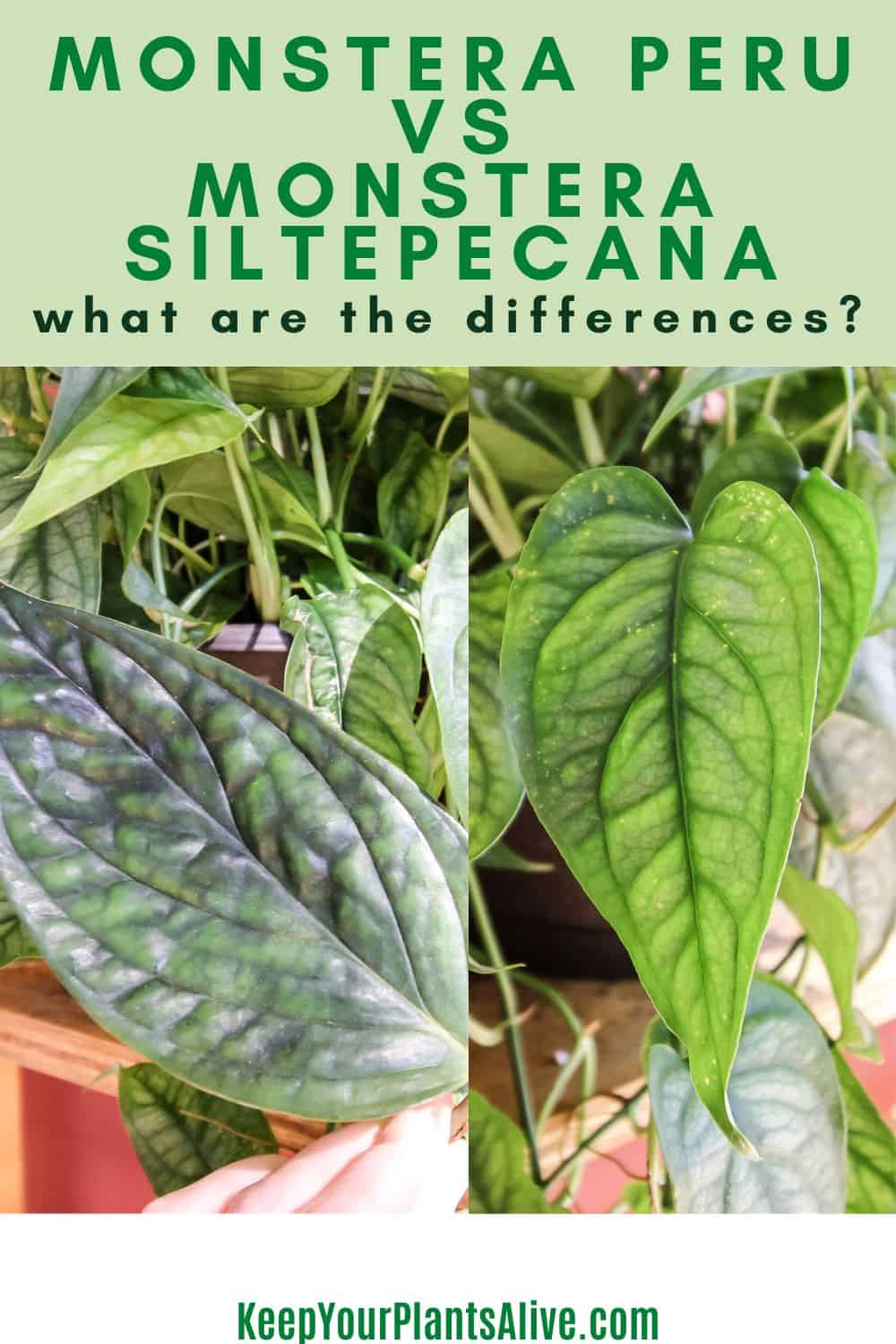Considering adding a new houseplant to your collection? Dive into our Monstera Siltepecana vs. Cebu Blue Pothos comparison guide, comparing the similarities and differences in these two popular houseplants.
When you collect a lot of green houseplants, you start to look for certain characteristics that make plants stand out.
Lately, I have been finding myself drawn to plants with a lot of texture on the leaves and plants that have a silvery glimmer to them.
When it comes to selecting the perfect textured, silvery houseplant, the choice often narrows down to Monstera Siltepecana and Cebu Blue Pothos.
Monstera Siltepecana boasts heart-shaped leaves, ranging from 2 to 4 inches in width, with a velvety texture and delicate silver or cream-colored veins, exuding an air of sophistication.
On the other hand, Cebu Blue Pothos charms with its cascading vines that elegantly spill over containers, showcasing its unique blue-green leaves.
In this comprehensive guide, we'll delve into the distinctive features of these plants, empowering you to pick the right plant for your collection!
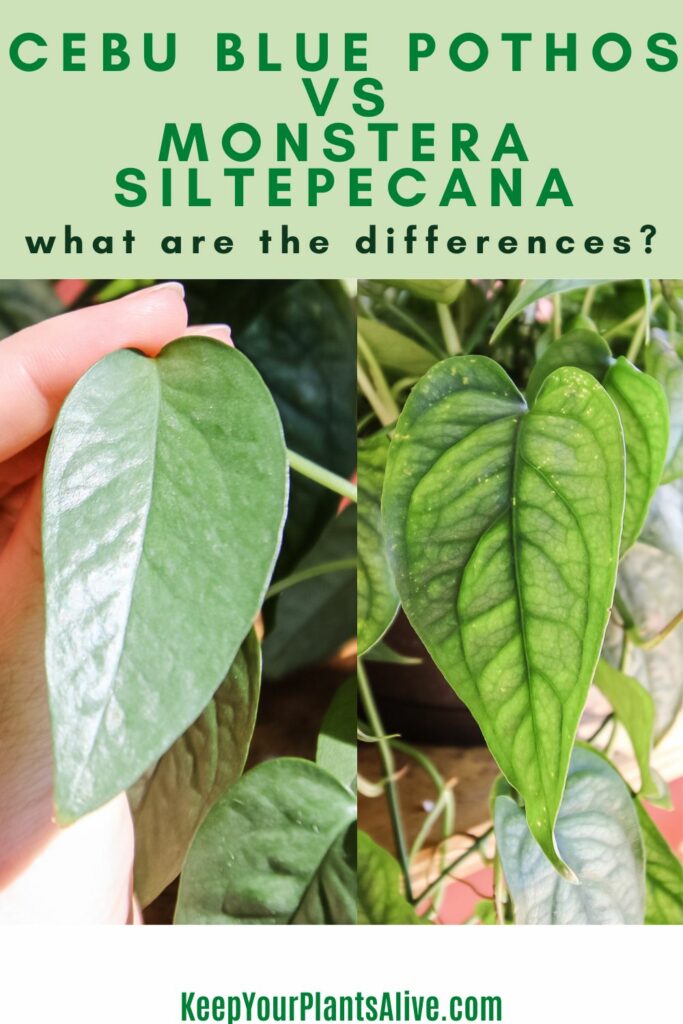
Meet the Monstera Siltepecana
Monstera Siltepecana is renowned for its heart-shaped leaves, each ranging from 2 to 4 inches in width, boasting a velvety texture. What truly sets it apart are the intricate patterns of silver or cream-colored veins, adding an elegant touch to its appearance.
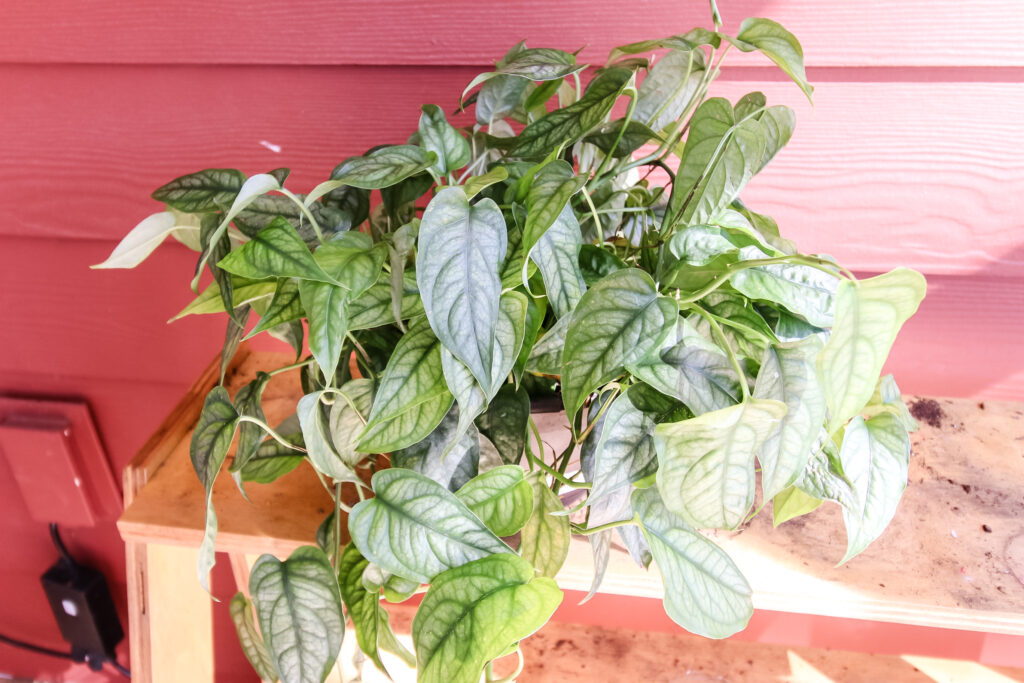
Originating from the tropical regions of Central and South America, Monstera Siltepecana thrives in warm, humid environments. Despite its origins, this plant has seamlessly adapted to indoor living.
Its ability to flourish in low-light conditions makes it an excellent choice for spaces with limited sunlight. Its effortless adjustment to varying light levels and indoor humidity levels has made it an easy choice among indoor plant enthusiasts.
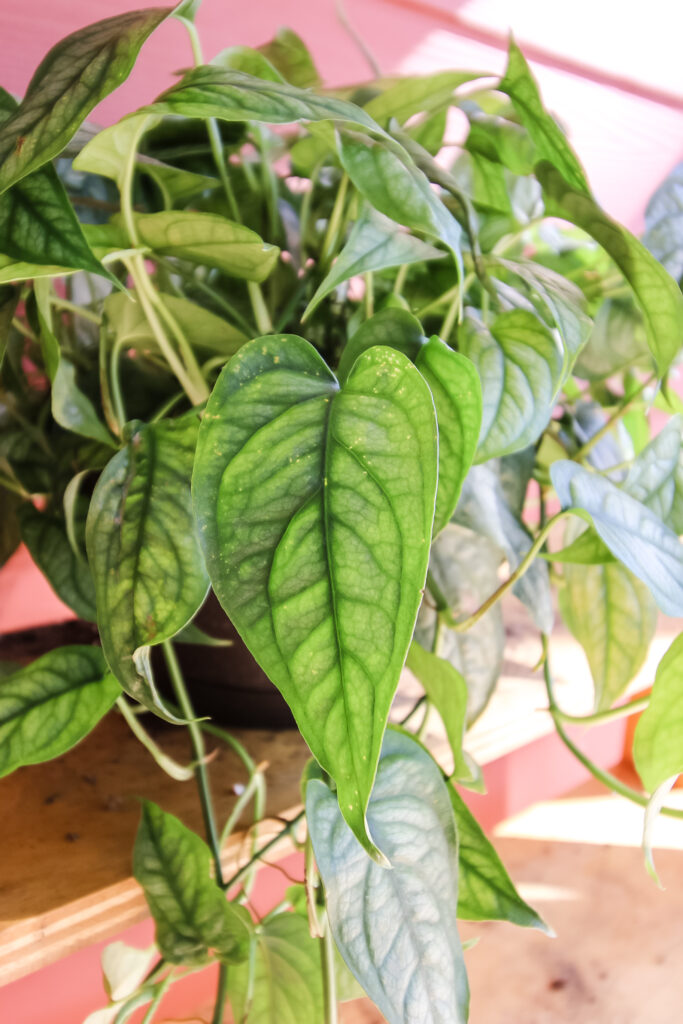
Click here for our complete Monstera Siltepecana care guide!
Discover the Cebu Blue Pothos
Cebu Blue Pothos, known for its mesmerizing blue-green leaves, is a cascading beauty that adds a touch of tranquility to any room. Its vines elegantly spill over containers, creating a captivating visual display.
The heart-shaped leaves exhibit a unique blue hue, enhancing the overall aesthetic appeal.

Native to the Philippines, Cebu Blue Pothos is naturally inclined to warm, tropical climates. Indoors, it thrives in moderate to bright indirect light, making it suitable for various indoor spaces.
Its resilience and ability to adapt to different environments make it a popular choice among plant enthusiasts.
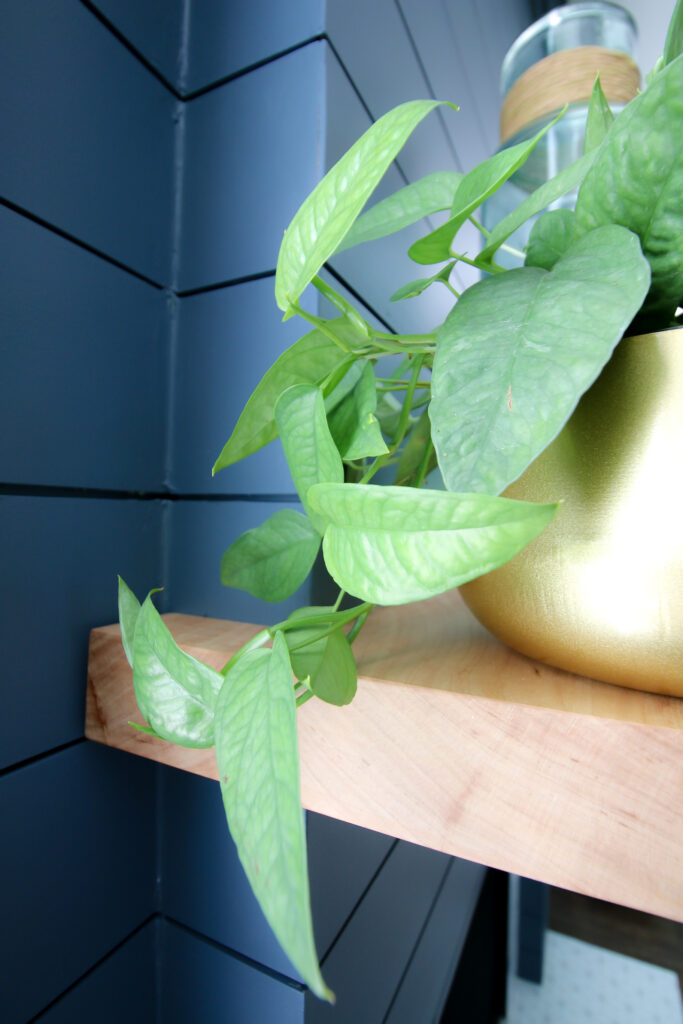
Click here for our complete Cebu Blue Pothos care guide!
Comparing Monstera Siltepecana and Cebu Blue Pothos
Both Monstera Siltepecana and Cebu Blue Pothos offer distinct characteristics that cater to different tastes.
Monstera Siltepecana boasts velvety heart-shaped leaves and delicate variegation, while Cebu Blue Pothos enchants with its cascading vines and striking blue-green leaves.
Your choice between the two depends on your preference for leaf texture, size, and the ambiance you want to create.
Monstera Siltepecana exudes elegance and compactness, making it ideal for smaller spaces, while Cebu Blue Pothos captivates with its cascading vines, perfect for creating a serene atmosphere in any room.
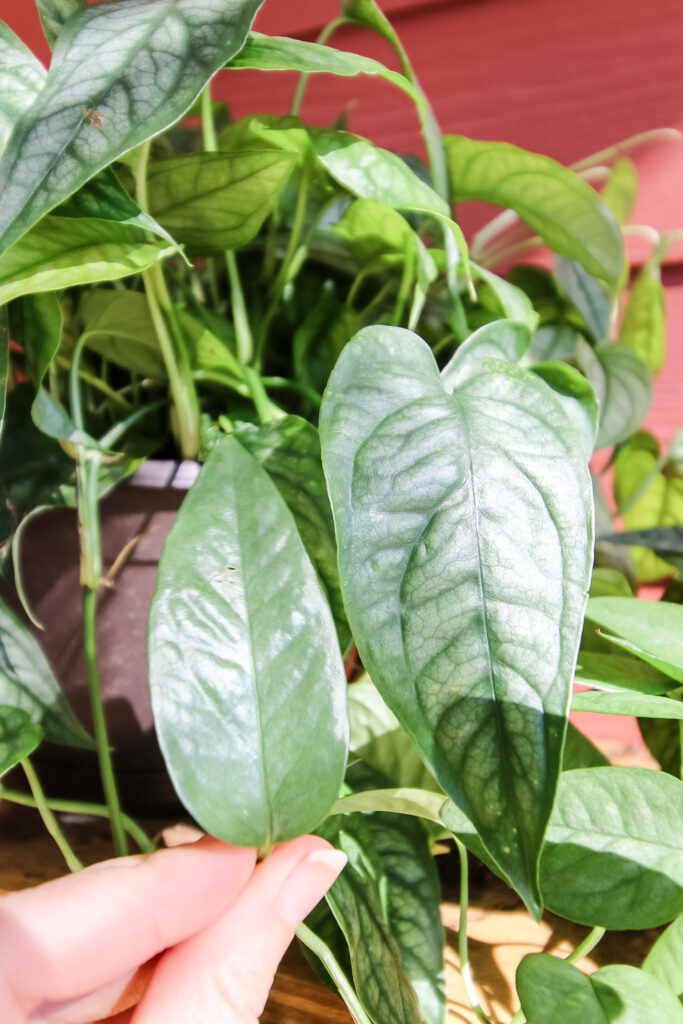
Leaf Texture and Appearance
The leaves on these plants are of a similar texture, but different colors of green.
Monstera Siltepecana's heart-shaped leaves feature a velvety texture and intricate silver or cream-colored veins. They are generally twice as large as the leaves of a Cebu Blue.
In contrast, Cebu Blue Pothos has fast growing, long vines and captivating blue-green leaves.

Growth Patterns and Size
These two plants have very different growth patterns.
Monstera Siltepecana grows compactly, making it suitable for smaller indoor spaces. Its heart-shaped leaves remain modest in size, ranging from 2 to 4 inches in width.
On the other hand, Cebu Blue Pothos exhibits cascading vines that gracefully spill over containers.
Light and Environmental Requirements
Both Monstera Siltepecana and Cebu Blue Pothos thrive in similar light conditions, preferring moderate to bright indirect light.
Their ability to adapt to various lighting situations makes them versatile choices for indoor spaces. These plants share comparable care requirements, allowing them to complement each other seamlessly.
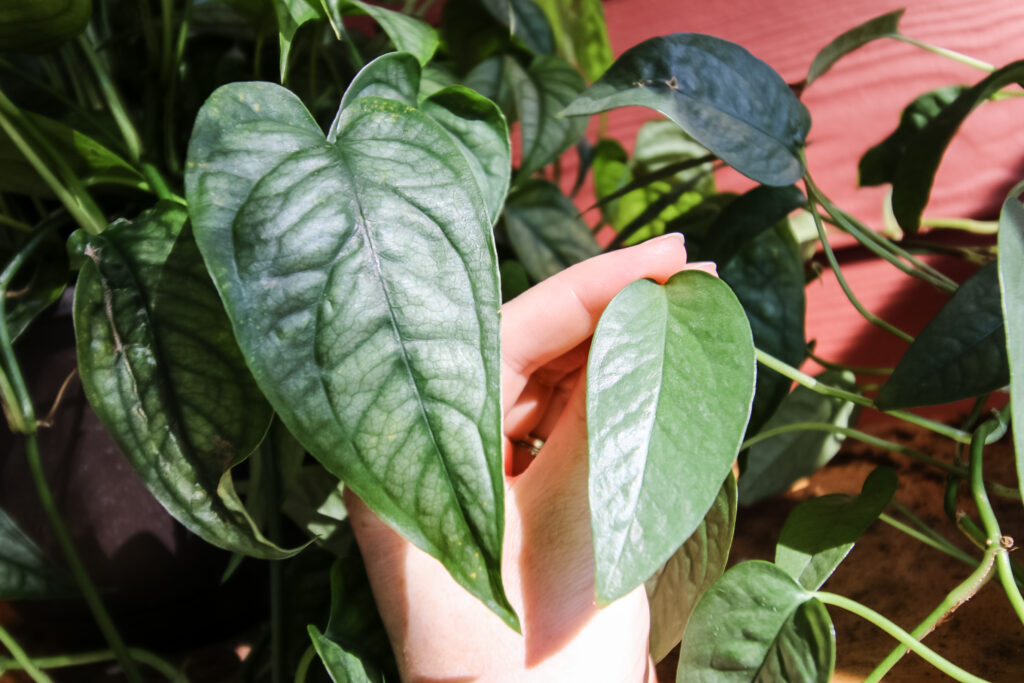
Which Plant Is Right for You?
Choosing between Monstera Siltepecana and Cebu Blue Pothos ultimately depends on your aesthetic preferences and the ambiance you wish to create in your living space.
Opt for Monstera Siltepecana if...
- You prefer plants with a more delicate appearance, featuring heart-shaped leaves and subtle variegation.
- You have limited space and need a compact plant that fits well on tabletops or shelves.
- You appreciate the elegance of velvety textures and intricate silver or cream-colored veins on the leaves.
Choose Cebu Blue Pothos if...
- You're drawn to plants with cascading vines and striking blue-green leaves.
- You have ample space and want a plant that gracefully spills over containers.
- You're looking for a low-maintenance yet visually captivating plant that complements various interior decor styles.
In the end, the decision is yours, and both Monstera Siltepecana and Cebu Blue Pothos have their unique charm.
Consider your available space, your aesthetic preferences, and the ambiance you want to create. Whichever you choose, you're sure to enjoy the natural beauty and serenity that these plants bring to your home.
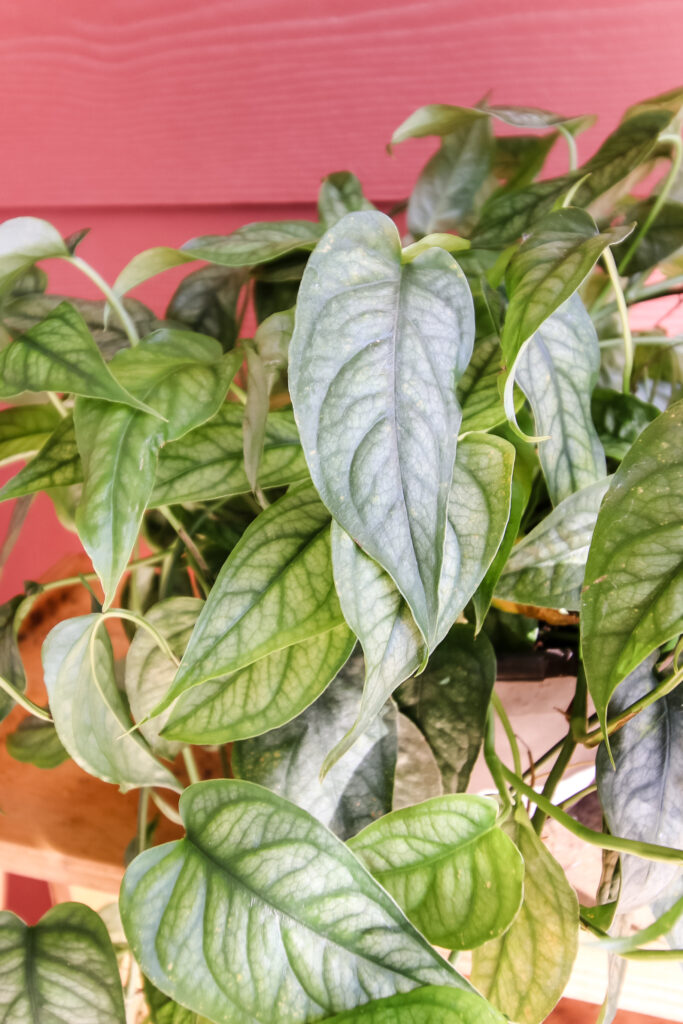
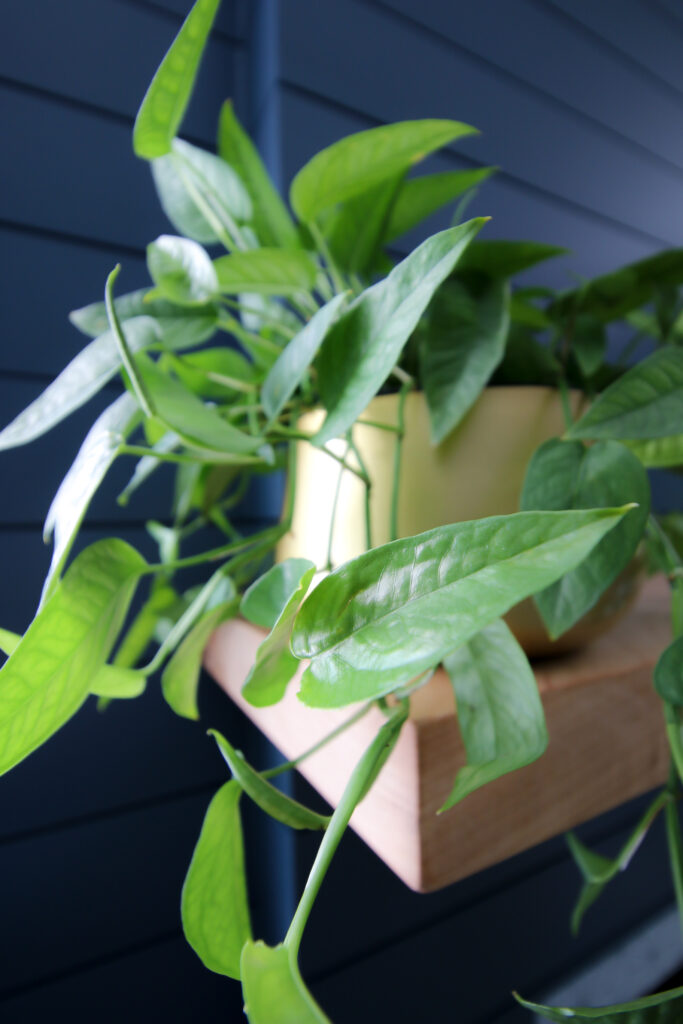
Plant Care Tips
Regardless of your choice between Monstera Siltepecana and Cebu Blue Pothos, here are some general care tips to ensure your plant thrives:
- Lighting: Provide moderate to bright indirect light, avoiding direct sunlight.
- Watering: Allow the top inch of soil to dry between waterings, ensuring proper drainage.
- Humidity: Maintain a humid environment, especially in dry indoor conditions, to keep the leaves vibrant.
- Temperature: Keep a consistent room temperature between 65°F to 80°F (18°C to 27°C).
- Fertilization: Feed your plant with a balanced liquid fertilizer diluted to half strength every 4-6 weeks during the growing season (spring and summer).
- Pruning and Maintenance: Trim any yellow or damaged leaves to encourage new growth and maintain the plant's appearance.
- Repotting: Repot as needed, typically every 1-2 years, choosing a slightly larger pot with fresh, well-draining soil.
- Pest Management: Keep an eye out for pests and treat promptly with insecticidal soap or neem oil.
- Patience and Observation: Plants require time to adapt and grow. Regularly observe your plant and adjust your care routine based on its response to ensure its health and vitality.
Thanks for reading!


Hey there, I'm Morgan, a houseplant enthusiast from sunny Charleston, South Carolina. Growing up surrounded by my mom's lush orchids and African violets, I discovered the magic of bringing nature indoors. Thanks to the pandemic, I delved deeper into houseplants, discovering their power to uplift moods and transform spaces. I'm here to spill all my secrets, helping you pick the perfect houseplant - and make it happy. Let's keep your plants alive, together! 😊

